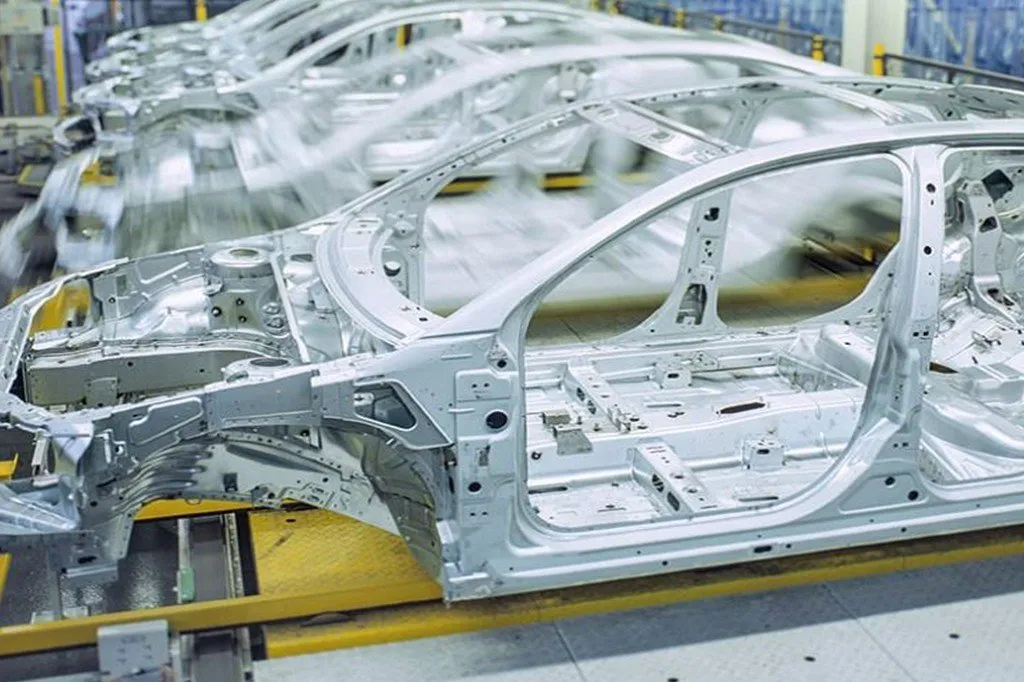-
Новости
- ИССЛЕДОВАТЬ
-
Страницы
-
Статьи пользователей
-
Courses
-
Кинозал
Lightweight Body Structures: The Future of Automotive Engineering

Introduction
The Automotive Light Weight Body Panel Market is expanding rapidly as the global automotive industry accelerates its shift toward fuel-efficient, low-emission, and high-performance vehicles. Lightweight body panels made from advanced materials such as aluminum, magnesium, carbon fiber, thermoplastics, and high-strength steel play a critical role in reducing vehicle weight while maintaining structural integrity, safety, and aesthetics. Weight reduction directly improves fuel economy and enhances battery efficiency and driving range in electric vehicles (EVs), making lightweight panels a key enabler of future mobility. Growing regulatory pressure to reduce carbon emissions, increasing consumer preference for high-efficiency vehicles, and technological developments in material science are transforming automotive body engineering. The market is projected to grow at a CAGR of around 8–9% over the forecast period, driven by rising EV production, increased adoption of composite materials, and automaker investments in lightweighting strategies. As the industry transitions toward electrified and sustainable vehicle platforms, lightweight body panels are becoming essential for next-generation automotive design.
Market Drivers
Stricter global emission and fuel efficiency regulations are a major driver accelerating the adoption of lightweight body panels. Reducing vehicle mass improves fuel economy and extends EV battery range, making lightweighting a strategic priority for automakers. Increasing production of electric vehicles and hybrid vehicles is boosting demand for lightweight components for improved efficiency and performance. Advancements in high-strength and corrosion-resistant materials, coupled with improved forming, molding, and joining technologies, make lightweight panels more feasible for large-scale use. Growing consumer demand for high-performance vehicles with enhanced acceleration, driving dynamics, and safety is also contributing to market growth. Additionally, the rise of sustainable mobility and circular automotive manufacturing is supporting the adoption of recyclable, bio-based, and eco-friendly panel materials.
Market Challenges
High raw material and production costs associated with lightweight materials such as carbon fiber, aluminum, and magnesium remain major constraints, especially for mass-market vehicles. Manufacturing complexity, including advanced forming, welding, and joining technologies required for composite and mixed-material panels, adds to development and production expenses. Repair and replacement costs for lightweight body parts are higher than traditional steel components, affecting affordability in cost-sensitive markets. Limited availability of skilled workforce for composite material manufacturing and assembly also restricts widespread adoption. Supply chain vulnerabilities and fluctuating material prices further create challenges for automakers. Additionally, ensuring crash safety, durability, and structural strength while significantly reducing weight requires extensive testing and engineering validation, slowing adoption for certain vehicle platforms.
Market Opportunities
Electrification presents strong growth opportunities for lightweight body panels, as EV manufacturers seek to reduce weight and improve battery efficiency. Increased use of multi-material structures and hybrid composites—combining metals with carbon fiber or reinforced polymers—creates new possibilities for weight optimization and structural strength. Advancements in molding, 3D printing, and additive manufacturing enable more complex and lightweight panel designs, reducing waste and production costs. Growing demand for autonomous and connected vehicles will require lightweight panels with integrated sensors, radar, LiDAR, and electronic components, unlocking opportunities for smart body panel development. Expansion of premium and luxury vehicle segments in emerging markets also supports adoption of lightweight panels. The rise of sustainable materials, including recycled aluminum, natural fiber composites, and bio-based polymers, will further boost the market as automakers pursue carbon-neutral manufacturing.
Regional Insights
Europe holds a strong position in the Automotive Light Weight Body Panel Market due to stringent emission regulations, sustainability goals, and presence of leading automakers committed to lightweighting. Germany, France, Sweden, and the UK drive innovation in composite and aluminuim body structures. North America shows substantial growth led by increased EV production, lightweight truck manufacturing, and rising consumer preference for fuel-efficient vehicles. The U.S. is at the forefront of composite material adoption in high-performance and electric vehicles. Asia-Pacific is the fastest-growing region, driven by rapid vehicle production, EV expansion, and government-led emission reduction targets in China, Japan, South Korea, and India. China’s booming EV sector contributes significantly to market growth. The Middle East, Africa, and Latin America are gradually adopting lightweight materials, with future potential linked to automotive industry expansion and regulatory developments.
Future Outlook
The future of the Automotive Light Weight Body Panel Market will be driven by material innovation, sustainability, and integration with smart vehicle technologies. Composite and hybrid material usage will expand beyond premium vehicles into mass-market segments as production costs decline. Smart body panels with embedded electronics, sensors, and aerodynamic features will gain traction in connected and autonomous vehicles. Recyclability and circular manufacturing will become key decision factors, pushing OEMs toward eco-friendly and renewable material solutions. Integration of AI and digital simulation tools in design and testing will shorten development cycles for lightweight panels. As EV adoption accelerates and government emission standards tighten further, lightweight body panels will become a standard requirement across vehicle types and price segments, shaping the next generation of automotive design.
Conclusion
The Automotive Light Weight Body Panel Market is evolving rapidly as the automotive industry prioritizes efficiency, sustainability, and advanced engineering. Lightweight body panels play a crucial role in improving fuel economy, EV battery performance, and overall vehicle dynamics. While high material costs, manufacturing challenges, and repair complexity pose barriers, ongoing innovation and technological advancements are making lightweight solutions more accessible. As electrification, sustainability, and smart mobility reshape the automotive landscape, lightweight body panels will become central to vehicle design strategies. The market is well positioned for long-term growth, driven by regulatory pressure, consumer demand for performance, and the industry’s commitment to sustainable and efficient mobility.
- Art
- Causes
- Crafts
- Dance
- Drinks
- Film
- Fitness
- Food
- Игры
- Gardening
- Health
- Главная
- Literature
- Music
- Networking
- Другое
- Party
- Religion
- Shopping
- Sports
- Theater
- Wellness


